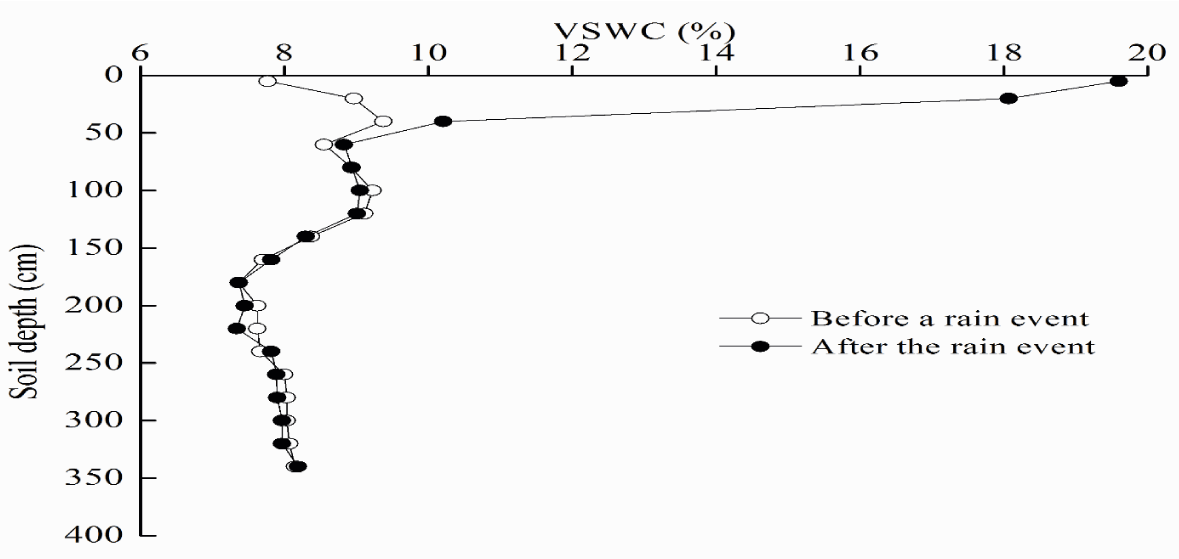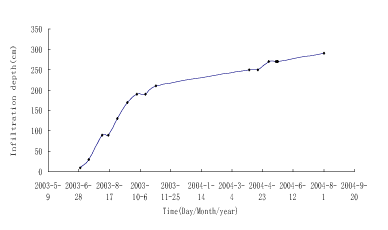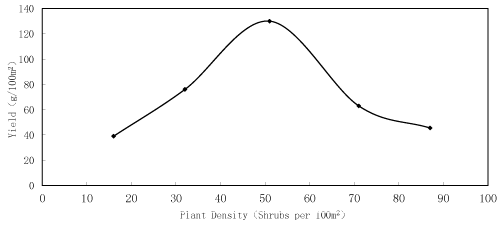International Journal of Agricultural Science and Food Technology
Rice carrying capacity and sustainable produce of rice in resources-limited regions
Zhongsheng Guo*
Cite this as
Guo Z (2019) Rice carrying capacity and sustainable produce of rice in resources-limited regions. Int J Agric Sc Food Technol 5(1): 054-057. DOI: 10.17352/2455-815X.000042Rice is a main food over the world. With the growing population and urbanization, the demand for the rice is increasing.To ensure the sustainable produce and market supply of rice is most important to meet the people’s need of rice and the sustainable development. Most of distribution area of rice is in resources-limited regions, and sometime natural calamities influences rice yield,quality and market supply almost every year in resources-limited regions over the world. However, there are few reports of rice carrying capacity and sustainable produce of Rice. In this study,author review rice carrying capacity and sustainable produce of rice. In the near future, we should study the rice carrying capacity and regulated the relationship between nature resources and rice plant growth in the resources-limited regions at the right time to ensure the sustainable use of natural resources and sustainable produce of rice and market supply to serve sustainable development.
Rice (Oryza sativa L.) is one of the most important staple crops, feeding almost half of the world population. It is cultivated worldwide with a concentration in Asia. Rice domestication has greatly influenced the history and civilization of humans [1]. With the growing population and urbanization, the demand for the rice is increasing. But the rice production is not escalating at a requisite rate to keep up with the food demand because of the various environmental stresses. So it is very necessary to develop a technology to produce large amount of rice in the presence of multiple environmental stress conditions [2].
Yield and quality of rice is affected due to various biotic and abiotic stresses,which influence sustainable development. Biotic stresses include weed, fowl and domestic animal eat rice and plant diseases and insect pests, we can accept the measures such as weeding, fence isolation, control plant diseases and insect pests. Abiotic stresses include drought, salinity and temperature so on. For abiotic stress, based on carrying capacity,we can accept regulate and control method to regulate the relationship between nature resources and rice plant growth and realize the sustainable use of nature resources and sustainable produce of rice because carrying capacity is the key problem of sustainable development. However, there is a few report of rice carrying capacity and the sustainable produce of rice. The purpose of the study is to introduce the rice carrying capacity and the sustainable produce of rice for better understanding the sustainable use of nature resources in resources-limited regions or the natural calamities happen and reduce of the effect of nature resource shortage on rice produce.
Power of plant self regulation
The growth response of rice to ecological environment has three elemental points: Highest, optimal and lowest point.Along with plant growth, the the supply of nature resources reduce the thickness or intensity of nature resources deviate from the optimal point the stress of resources on rice growth increase.The rice plants tend to respond to stresses by activating signaling pathways. Different genes are up- and down-regulated in response to abiotic stress which initiates or inhibits various signaling processes and make the plant tolerate to stress conditions [3]. But, the power for some plant self-regulation is limit. When the the supply rate of nature resources reach to an intolerable degree, the resources and environment will influence rice growth, yield and beneficial result of rice, and then market supply of rice.At this time, we have to regulate the relationship between nature resources and rice plant growth to evade rice failure.
The degree of natural calamities effect on rice produce can be expressed by the intensity and duration of natural calamities because the intensity and duration of the natural calamities influence the degree of Plant tolerance. The degree of plant tolerance can be indicated by the supply rate of nature resources and duration when natural calamities happens. When the intensity and duration of the natural calamities reach to some degree, the effect of the nature resources stress on plant growth run up to an intolerable degree, which severe influence the quality, yield and benefit of rice plant community. The relationship between nature resources and rice plant growth should be regulated on the vegetation carrying capacity in the resources-limited regions.The regulation of the relationship between nature resources and rice plant growth can be expressed by the start time and the regulated amount when the intolerable natural calamities happens. The start time of the relationship between nature resources and rice plant growth determined by the degree of plant tolerance, the supply rate of nature resources, such as Soil Water Resources Use Limit by Plant (SWRULP) [4-7] in water-limited regions, and the amount of regulation is determined by Vegetation Carrying Capacity, such as Soil Water Carrying Capacity for Vegetation in the water-limited regions [5-10].
Carrying capacity
Resource constraints set a maximum size that a population can safely attain. The carrying capacity is the maximum population that nature resources bear population, which is a key issue for sustainable development. The idea of carrying capacity has its origin in the doctrine of Thomas Robert Malthus, who considered that society had the ability to increase agricultural production only at an arithmetic rate but the number of people to be fed increased at a geometric rate. Therefore, to some degree, population was likely to exceed food supplies, with calamitous results [11].
The term carrying capacity was first used by range managers [12] and U.S. Department of Agriculture researchers [13]. After Raymond Pearl and Lowell J. Reed proposed logistic equations in 1920, Eugene Odum [14,15], equated the term carrying capacity with the constant K in logistic equations, see equation 1:
Where N (t) is density at time t, the population per unit area at time t, r is the intrinsic growth rate, r > 0 and K is an asymptote (the carrying capacity) with K > 0.
Vegetation carrying capacity
The concepts of vegetation carrying capacity is first proposed by Guo in 2000 [8], in order to solve serious drying of soil because the serious drying of soil eventually result in soil degradation, vegetation decline and agriculture failure in the water-limited regions. Vegetation carrying capacity can be defined as the ability of land or nature resources to support vegetation.Because Vegetation includes different plant communities that consist of different plant species within a region or a country,of course, such as in the water-limited regions.
Vegetation Carrying Capacity first proposed by Guo and so on in 2000 [8]. Under field conditions,some plant communities are formed by a single plant species to form a population, and others are formed by many plant species to form a plant community to use land or nature resources, such as space resources (solar energy and temperature and so on), soil water or soil nutrient.Soil nutrient include soil nitrogen, soil potassium and soil phosphorus and so on. So, Vegetation carrying capacity includes space vegetation carrying capacity, the carrying capacity of land or space resources for vegetation; soil water carrying capacity for vegetation (SWCCV) , the carrying capacity of soil water resources for vegetation, and soil nutrient carrying capacity for vegetation (SNCCV), the carrying capacity of soil nutrient resources for vegetation. SNCCV can be subdivided into soil nitrogen or potassium or phosphorus carrying capacity for vegetation and so on.
Regulation of the relationship between natural resources and rice plant growth
The size rice and the amount of leaf area of rice per plant is closely related to rice panicle number and grain number of single panicle rice as well as the yield and quality of rice per plant, which is closely related to natural resources. The size rice and amount of leaf of rice per plant is closely related to rice carrying capacity in the growing season, especially the rice carrying capacity in the key regulation period (Minimum death days) in resources-limited regions.If the duration of the natural calamities is smaller than or equal to the the minimum death days, we cannot regulate the relationship between the supply of natural resources and rice plant growth. If the duration of the natural calamities is longer than the minimum death days, we should reduce the amount of leaf and density in rice plant community to evade rice plant death or single rice plant size cease growth and death because the supply rate of nature resources in the rice growing season change with day or year. The natural calamities cause the sudden increase or reduce of the supply rate of nature resources, which result in soil degradation, influence the yield and quality of rice and eventually result in agriculture failure.
Such as in the water-limited region, the supply rate of nature resources, such as precipitation sudden reduce. When the supply rate of nature resources is equal to the supply rate of nature resources when the Soil Water Resources Use is equal to Soil Water Resources Use Limit by Plant, which cause serious soil drying, soil degradation, vegetation decline and agriculture failure. In order to solve these problems, the relationship between the soil water and plant growth have to be regulated. The theoretical foundation of the regulation is Soil Water Resources Use Limit by Plant (SWRULP) and Soil Water Carrying Capacity for Vegetation (SWCCV).
SWRULP is the soil water storage in the maximum infiltration depth (MID) in which soil water content equals wilting coefficient.Wilting coefficient is expressed by the Wilting coefficient of indicator plant. Indicator plant is constructive species for natural vegetation and principal or purpose species of trees or grasses for plantation [4,6,7].
Infiltration depth for one rain event can be determined by the two-curve method found in 2004 and named in 2016. The infiltration depth equals the distance from the surface to the crossover point between the two respective soil water distribution curves of soil water with soil depth before and after the rain event (figure 1). The MID will occur after a continuous heavy rainfall event and a long-term cumulative infiltration process, and can be determined by a series of two-curve methods (figure 2) [6,7].
Soil Water Carrying Capacity for Vegetation (SWCCV) is the highest density (relative index)or population quantity (absolute index) of indicator plant in a plant community when soil water consumption is equal to soil water supply ins the root-zone soil layers in a given time scale (key regulation period, minimum death days) in water-limited regions [6-9].
The relationship between plant density and rice seed yield may be express by normal distribution figure 3. When the soil water resources in the MID depth equal Soil Water Resources Use Limit by Plant (SWRULP), the relationship between soil water and plant growth has to be regulated on the Soil Water Carrying Capacity for Vegetation to ensure sustainable use of soil water resources and the sustainable produce of rice to meet the people’s need of rice products and realize the sustainable development.
Study and look into the distance
As the climate warms, extreme climate disasters increase. With the growing population and urbanization, the demand for the rice is increasing. But the rice production is not escalating at a requisite rate to keep up with the food demand because of the various environmental stresses and resources shortage. In order to deal with these extreme climate disasters, we should study the sudden change of supply rate of nature resources and duration and vegetation carrying capacity, especially the rice carrying capacity in the minimum death days. When the intensity of natural calamities effect on rice growth is more than the degree of rice plant tolerance. If the duration of natural calamities is more than the minimum death days, we have to regulate the relationship between nature resources and plant growth to reduce the effect of natural calamities effect on rice growth and yield and quality to make sustainable use of nature resources and carry out the sustainable produce of rice to meet the need of growing population for rice.
This study was supported by National key R & D plan Project No. 2016YFC0501702 And the National Science Fund of China (Project Nos 41071193 and 41271539)
- Wei X, Huang XH (2019) Origin, taxonomy, and phylogenetics of rice, Rice (Fourth Edition) 1-29. Link: https://bit.ly/2Z9M9uy
- Jini D, Joseph B (2019) Chapter 31: Use of Phytohormones in Improving Abiotic Stress Tolerance to Rice, Advances in Rice Research for Abiotic Stress Tolerance 633-649.
- Mahmood-ur-Rahman, Ijaz M, Qamar S, Bukhari SA, Malik K (2019) Chapter 27: Abiotic Stress Signaling in Rice Crop, Advances in Rice Research for Abiotic Stress Tolerance 551-569. Link: https://bit.ly/2GoI8eg
- Guo ZS, Li YL (2009) Initiation stage to regulate the caragana growth and soil water in the semiarid area of Loess Hilly Region, China. Chin J Ecol 29: 5721-5729.
- Guo ZS (2010) Soil water resource use limit in semi-arid loess hilly area. Chin J Applied Ecol 21: 3029-3035. Link: https://bit.ly/2y2FUNd
- Guo ZS (2017) Soil Water Carrying Capacity for Vegetation in water-limited regions.ChinaXiv:201702.01026.
- Guo ZS (2014) Theory and Practice on Soil Water Carrying Capacity for Vegetation. Chinese Science Press.w
- Guo ZS, Shao MA, Zhang YP, Wu QX (2002) An Layer-dividing method to soil water in forest land, Proceedings of soil physics and ecological environment construction, edited by Shao MA, Shaanxi Science and technology press 75-79.
- Guo ZS, Shao MA (2003) Carrying capacity of soil water for Vegetation in the Loess Plateau,In:Water-saving agriculture and sustainable use of water and land resources. Shaanxi Science and Technology Press 704-711.
- Guo ZS (2004) Vegetation Carrying Capacity for Soil Water in A Semi-arid Region of Loess Hilly in the Loess Plateau, Dissertation for Doctoral Degree of NorthwestSci-Tech University of Agriculture and Forestry.
- Steiguer JED (1995) Three theories from economics about the environment Bioscience 45: 552-557. Link: https://bit.ly/2Z8RSk2
- Price D (1999) Carrying capacity reconsidered. Popul Enviro 21: 5–26. Link: https://bit.ly/2LAaBlF
- Young CC (1998) Defining the range. The development of carrying capacity in management. J Hist Biol 31: 61-83. Link: https://bit.ly/2JWhUkc
- Guo ZS, Shao MA (2013) Impact of afforestation density on soil and water conservation of the semiarid Loess Plateau. J Soil Water Conserv 68: 401-410. Link: https://bit.ly/2OmnfXk
- Cohen JE (1995) Population growth and earth’s human carrying capacity. Science 269: 341–346. Link: https://bit.ly/2Z5c0na
Article Alerts
Subscribe to our articles alerts and stay tuned.
 This work is licensed under a Creative Commons Attribution 4.0 International License.
This work is licensed under a Creative Commons Attribution 4.0 International License.




 Save to Mendeley
Save to Mendeley
